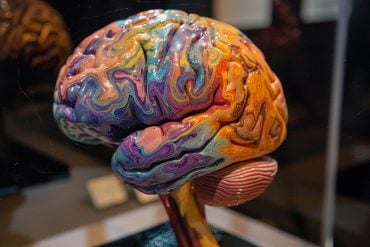Research carried out by the Medical Research Council (MRC) and published this week in Science has found a new and safe approach to prevent to neurodegenerative diseases in mice.
Damaged or ‘misfolded’ proteins represent a threat for cells and organismal function. To survive the threat of misfolded proteins, organisms have evolved defence mechanisms to prevent their accumulation. However, with age, these defence systems become gradually less efficient, leading to accumulation of misfolded proteins and this is devastating for cells and organisms where accumulation of misfolded proteins is central to the development of neurodegenerative diseases.
This research could be the first step towards developing drugs to prevent neurodegenerative diseases.
The team, based at the MRC Laboratory of Molecular Biology (LMB), has discovered a small molecule to boost the body’s natural cellular defence systems against damaged proteins and prevent them from accumulating and becoming harmful. When given to mice, the small molecule prevents the motor, histological and molecular defects of two otherwise unrelated protein-misfolding diseases in mice, Charcot-Marie-Tooth 1B and amyotrophic lateral sclerosis. This was achieved without any side effects.

The small-molecule was named Sephin1 because it is a specific inhibitor of a holophosphatase. Before this study, phosphatases were thought to be undruggable, in contrast to kinases, which are popular drug targets. The discovery of Sephin1, that safely prevents two diseases in mice represents a novel therapeutic modality.
Funding: This work was funded by the MRC, the European Research Council, EMBO, the Human Frontier Science Program, the Swiss National Science Foundation, the Italian Ministry of Health and NIH.
Neuroscience News would like to thank Anne Bertolotti for submitting this article to us.
Written by: Anne Bertolotti
Source: MRC Laboratory of Molecular Biology
Image Source: The image is adapted from an additional article by MRC Laboratory of Molecular Biology
Original Research: Abstract for “Preventing proteostasis diseases by selective inhibition of a phosphatase regulatory subunit” by Indrajit Das, Agnieszka Krzyzosiak, Kim Schneider, Lawrence Wrabetz, Maurizio D’Antonio, Nicholas Barry, Anna Sigurdardottir, and Anne Bertolotti in Science. Published online April 10 2015 doi:10.1126/science.aaa4484
Abstract
Preventing proteostasis diseases by selective inhibition of a phosphatase regulatory subunit
Protein phosphorylation regulates virtually all biological processes. Although protein kinases are popular drug targets, targeting protein phosphatases remains a challenge. Here, we describe Sephin1 (selective inhibitor of a holophosphatase), a small molecule that safely and selectively inhibited a regulatory subunit of protein phosphatase 1 in vivo. Sephin1 selectively bound and inhibited the stress-induced PPP1R15A, but not the related and constitutive PPP1R15B, to prolong the benefit of an adaptive phospho-signaling pathway, protecting cells from otherwise lethal protein misfolding stress. In vivo, Sephin1 safely prevented the motor, morphological, and molecular defects of two otherwise unrelated protein-misfolding diseases in mice, Charcot-Marie-Tooth 1B, and amyotrophic lateral sclerosis. Thus, regulatory subunits of phosphatases are drug targets, a property exploited here to safely prevent two protein misfolding diseases.
“Preventing proteostasis diseases by selective inhibition of a phosphatase regulatory subunit” by Indrajit Das, Agnieszka Krzyzosiak, Kim Schneider, Lawrence Wrabetz, Maurizio D’Antonio, Nicholas Barry, Anna Sigurdardottir, and Anne Bertolotti in Science. Published online April 10 2015 doi:10.1126/science.aaa4484






